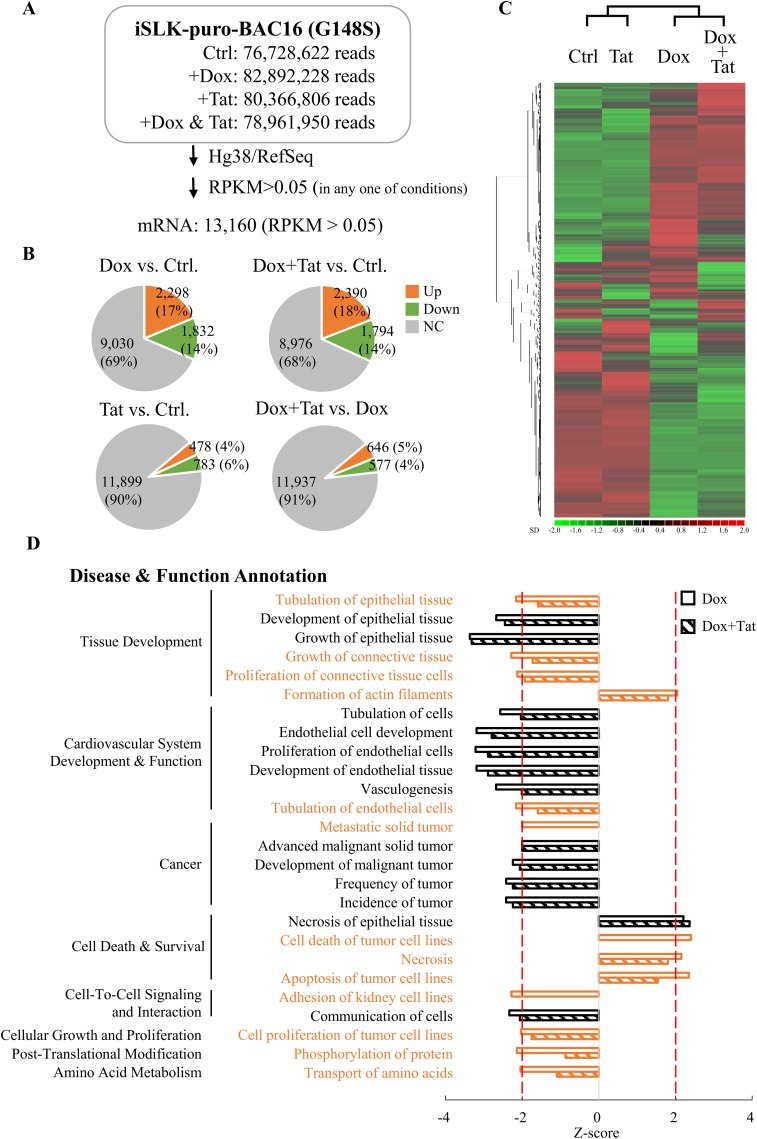FIG 1.
HIV Tat-regulated host genes in latent and lytic KSHV-infected SLK cells. (A) Summary of RNA-seq data. iSLK-BAC16 cells were treated with 1 μg/ml doxycycline (Dox) with or without 0.2 μg/ml HIV Tat. Cells cultured without any treatment were used as the control (Ctrl). At 48 h after treatment, total RNA was extracted and used for RNA-seq on an Illumina HiSeq 2000 platform. Paired-end reads were aligned to the human reference genome (Hg38) using CLC Genomics Workbench 11 (Qiagen) and annotated to RefSeq82 using the Partek Genomics Suite 7 (Partek). RPKM higher than 0.05 in any one of the samples were considered expressed and used for subsequent analysis. (B) Pie charts of mRNA expression data from the three treatment conditions described for panel A. The numbers (percentages) of mRNAs up- or downregulated more than 1.5-fold are shown. (C) Heat map of hierarchical cluster analysis of mRNA expression data from the 4 treatment conditions described for panel A. (D) The IPA regulation Z-score algorithm was applied to predict disease and function pathways that are enriched in genes differentially expressed (fold change > 1.5) in Dox- and Dox-plus-HIV Tat-treated groups. Cells without any treatment were used as the control (Ctrl). Pathways enriched in the Dox-treated group with a Z-score greater than 2 or less than −2 are represented by open bars. The Z-scores in the Dox-plus-HIV Tat treatment group were plotted in parallel (hatched bars). The pathways that showed lower significance in the Dox-plus-HIV Tat-treated group than in the Dox-treated group are shown in orange.

